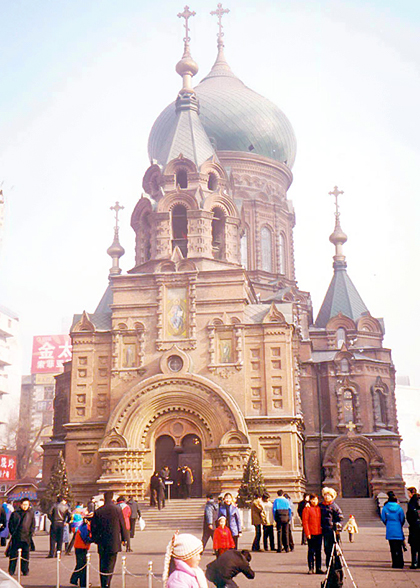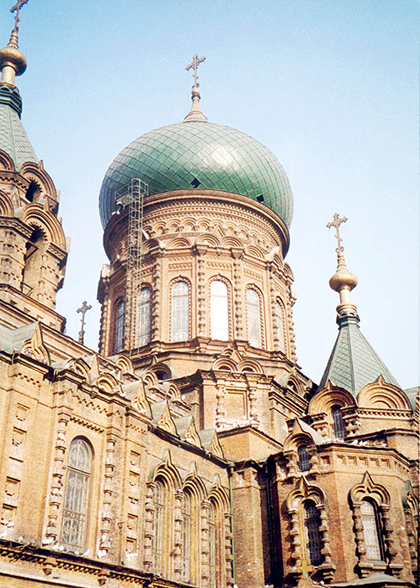St. Sophia Cathedral
 |
| St. Sophia Church |
The St. Sophia Cathedral has a complex history. Shortly after the Boxer Rebellion (1899-1901), the Russian built the church of timber in March, 1907. Then, the Russian rebuilt it using masonry and timber four years later. The onset of a second reconstruction by Russian was marked on September 23rd, 1923, and a ceremony was held to celebrate laying the corner stone. It was completed on November 25th, 1932, after nine years, and was hailed as a monumental work of art.
The Byzantine style church is so beautiful, it is said to look as if it had been made by God's hands. In fact, St. Sophia means 'God's wisdom'. Having a Latin cross footprint, the church's original shape was preserved during reconstruction. The St. Sophia Cathedral has four floors and is accessible by a door on each side.
 Until the 1960's, the bell tower over the entrance housed 7 bells of different sizes and tones. When there were religious festivals in the past, a well-trained ringer would play musical progressions, tolling the bells with ropes tied to his hands and feet. The bells resounded to the skies.
Until the 1960's, the bell tower over the entrance housed 7 bells of different sizes and tones. When there were religious festivals in the past, a well-trained ringer would play musical progressions, tolling the bells with ropes tied to his hands and feet. The bells resounded to the skies.By the 1990's, St. Sophia had undergone considerable decline. St. Sophia Cathedral no longer was in use, and residential apartments and office buildings surrounded it. Magnificent Russian painted murals adorned on the arched walls of the St. Sophia Cathedral were destroyed out of recognition. While in 1997, the local government under took to undo the decades of deterioration. But as the original Russian murals were lost completely, they were replaced by topically new murals depicting the architectural history of the Harbin community. And crosses that were removed in six places were replaced. Now, the murals, pendent lamps, dome and the bell tower are restored to their original splendor.
How to get to St. Sophia Cathedral
Harbin Bus Search
| Entrance Fee | CNY 15 |
|---|---|
| Opening Hours | 8:30 - 17:00 |
![]() Further Reading:
Further Reading:
Christianity in China
- Last updated on Dec. 26, 2023 by Gabby Li -